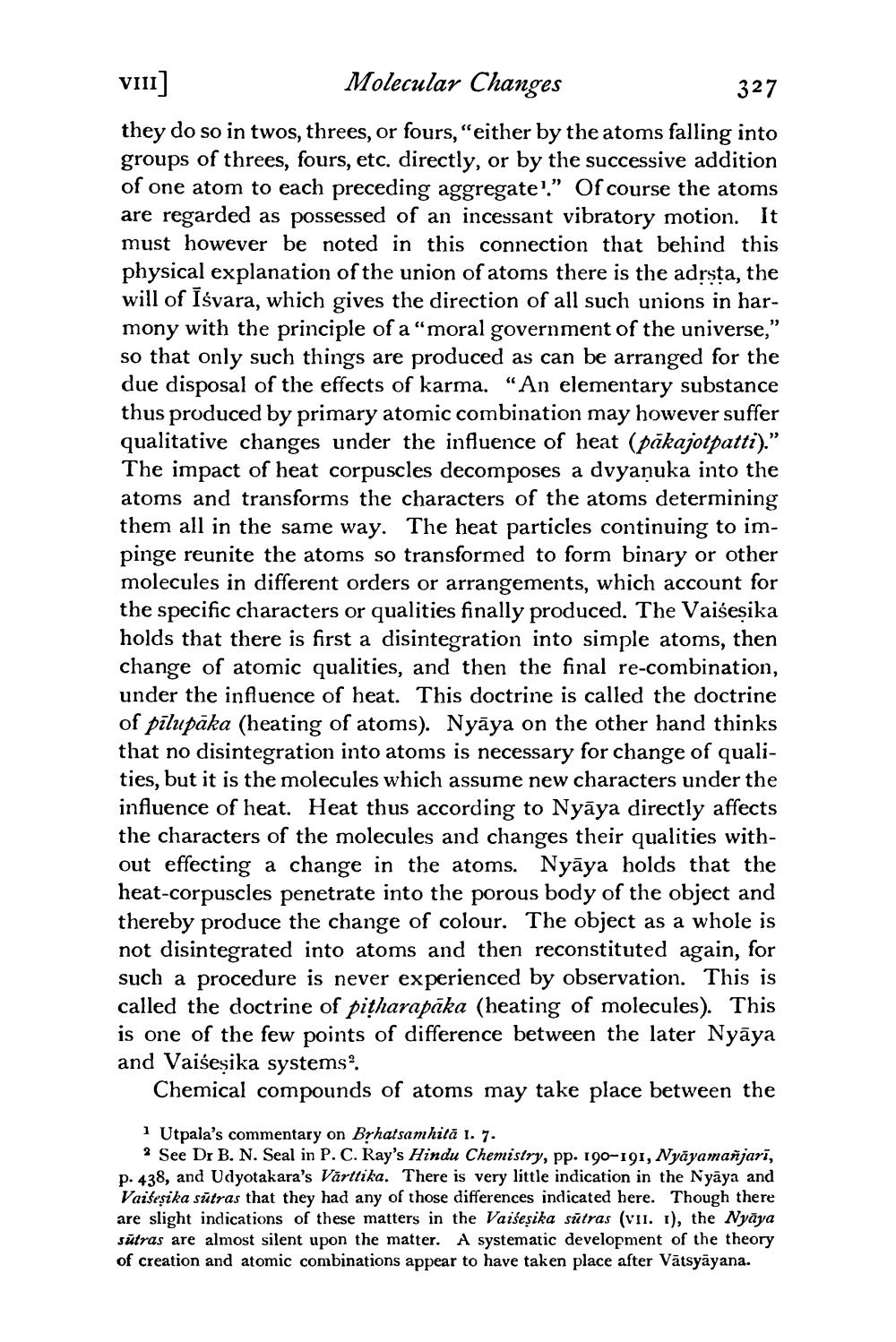________________
VIII]
Molecular Changes
327
they do so in twos, threes, or fours, "either by the atoms falling into groups of threes, fours, etc. directly, or by the successive addition of one atom to each preceding aggregate'." Of course the atoms are regarded as possessed of an incessant vibratory motion. It must however be noted in this connection that behind this physical explanation of the union of atoms there is the adṛsta, the will of Isvara, which gives the direction of all such unions in harmony with the principle of a "moral government of the universe," so that only such things are produced as can be arranged for the due disposal of the effects of karma. "An elementary substance thus produced by primary atomic combination may however suffer qualitative changes under the influence of heat (pakajotpatti)." The impact of heat corpuscles decomposes a dvyaṇuka into the atoms and transforms the characters of the atoms determining them all in the same way. The heat particles continuing to impinge reunite the atoms so transformed to form binary or other molecules in different orders or arrangements, which account for the specific characters or qualities finally produced. The Vaiseṣika holds that there is first a disintegration into simple atoms, then change of atomic qualities, and then the final re-combination, under the influence of heat. This doctrine is called the doctrine of pilupaka (heating of atoms). Nyaya on the other hand thinks that no disintegration into atoms is necessary for change of qualities, but it is the molecules which assume new characters under the influence of heat. Heat thus according to Nyaya directly affects the characters of the molecules and changes their qualities without effecting a change in the atoms. Nyāya holds that the heat-corpuscles penetrate into the porous body of the object and thereby produce the change of colour. The object as a whole is not disintegrated into atoms and then reconstituted again, for such a procedure is never experienced by observation. This is called the doctrine of piṭharapaka (heating of molecules). This is one of the few points of difference between the later Nyaya and Vaiseṣika systems".
Chemical compounds of atoms may take place between the
1 Utpala's commentary on Bṛhatsamhită 1. 7.
2 See Dr B. N. Seal in P. C. Ray's Hindu Chemistry, pp. 190-191, Nyayamañjarī, p. 438, and Udyotakara's Varttika. There is very little indication in the Nyaya and Vaiseṣika sutras that they had any of those differences indicated here. Though there are slight indications of these matters in the Vaiseṣika sutras (VII. 1), the Nyaya sutras are almost silent upon the matter. A systematic development of the theory of creation and atomic combinations appear to have taken place after Vātsyāyana.




